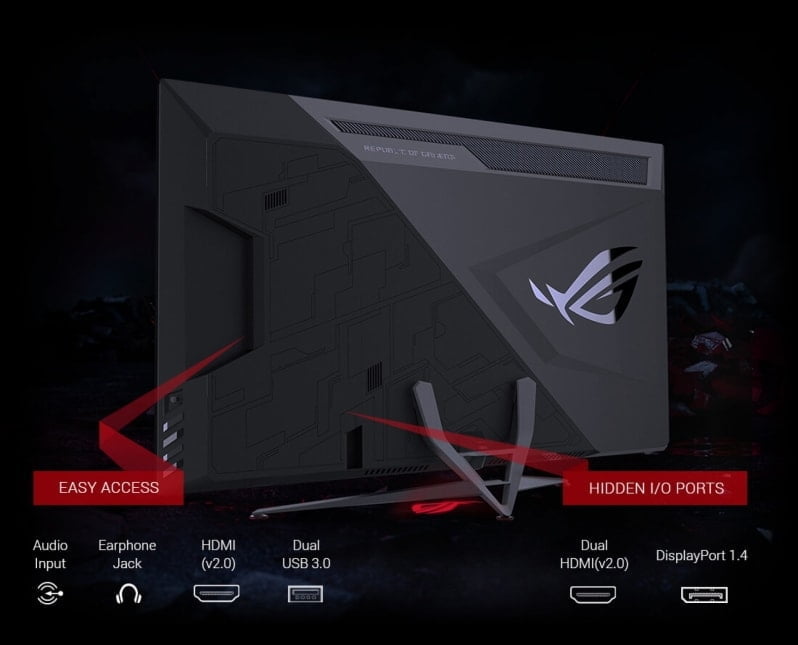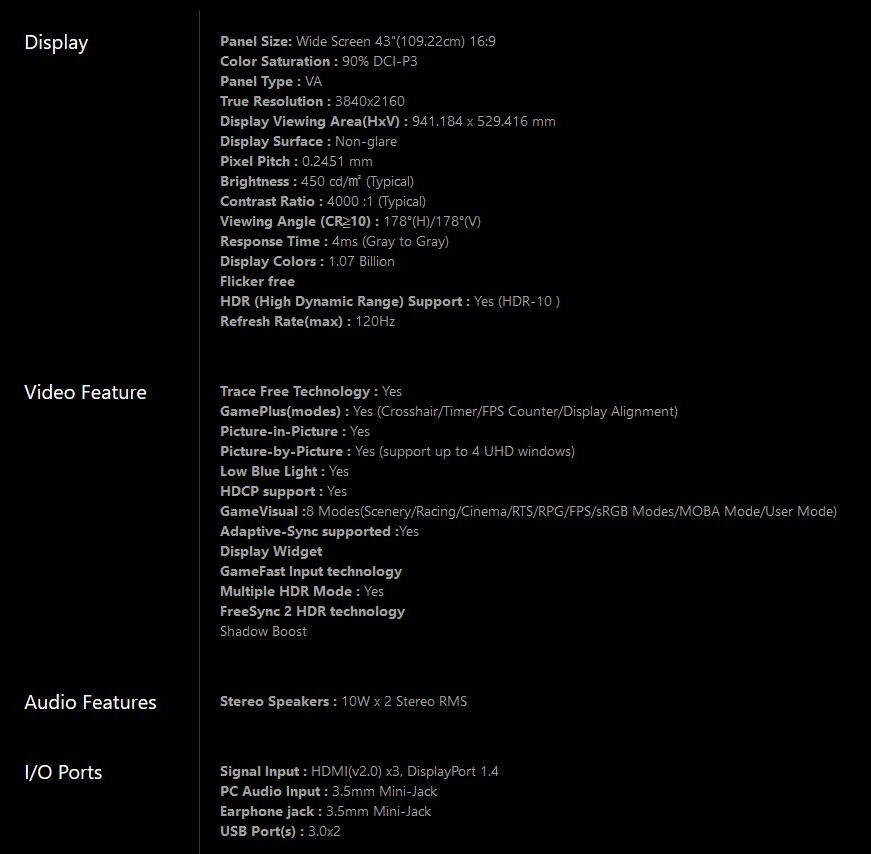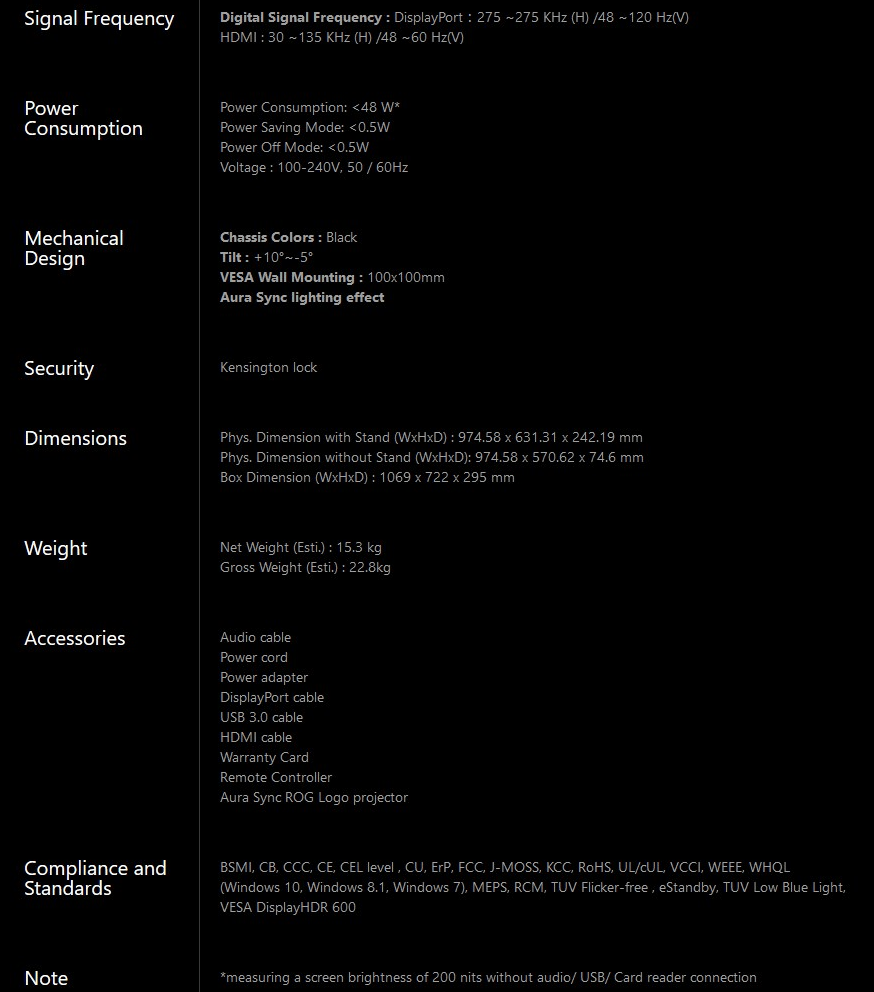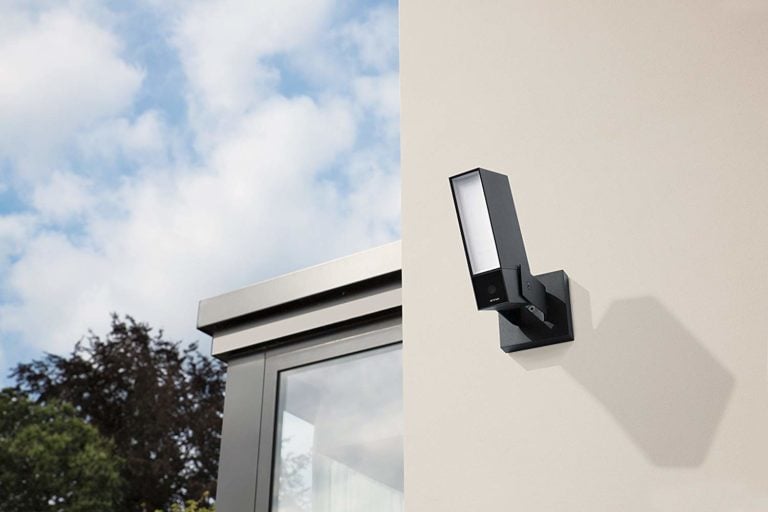Any links to online stores should be assumed to be affiliates. The company or PR agency provides all or most review samples. They have no control over my content, and I provide my honest opinion.
A couple of years ago multiple companies, including ASUS announced their Big Format Gaming Displays which were completely over the top and amazing. They did launch, some to middling reviews, and you can buy the HP OMEN X Emperium 65 display from Currys for a bargain £3,499.00.
This year, a more sensible solution as put forward, both ASUS and Acer announced two 43-inch FreeSync monitors. The Acer Predator CG437K and the ASUS ROG Strix XG438Q.
The ASUS ROG Strix XG438Q does all the stuff you wanted from the Nvidia’s Big Format Gaming Displays but in a smaller more affordable package.
It is currently expected that the monitor will launch this August for £1099
This is a 43-inch 4K monitor with refresh rates of up to 120Hz and support for AMD’s FreeSync 2 HDR technology and VESA DisplayHDR 600. In fact, it exceeds the spec for those standards with the screen’s local dimming features and its maximum brightness level of 750 nits. The screen also sports an anti-glare coating and what ASUS calls “Gamefast Input Technology” to minimise input latency and reduce screen glare.
This screen supports AMD’s FreeSync 2 HDR standard with a variable refresh rate (VRR) range of 48-120FPS. This is more than enough to active AMD’s low framerate compensation technology. Input-wise this TV-sized monitor supports three HDMI 2.0 inputs as well as a single DisplayPort 1.4 connection, making this monitor usable with both gaming consoles, home entertainment systems and PCs.
The XG438Q also supports picture-in-picture mode, with a main screen and inset window, along with a picture-by-picture mode that divides the monitor in half.
The monitor has not been formally verified by Nvidia as Gsync compatible, but this is the case for many monitors. Nvidia appears to be quite slow about this process. The monitor should be compatible though and you will need to activate Adaptive-Sync support within the drivers on uncertified displays, so we will have to wait and see how well this monitor works on Geforce hardware.
This monitor is expected to use a VA type panel and should deliver respectable levels of HDR support with 10-bit image processing, 750 nits of peak luminance, local dimming and both FreeSync 2 HDR and VESA DisplayHDR 600 certifications. The screen will also cover 90% of the DCI-P3 colour space and offer users three distinct HDR modes, ASUS Cinema HDR, ASUS Gaming HDR and FreeSync 2 HDR.
Looking at the rear of the display seems to indicate that there is no VESA mount which would be unusual for a monitor/TV of this size. For me, this is something that would genuinely stop my buying it, I used to use a 40-inch screen as my main monitor and it greatly benefits from being wall mounted so you get extra desk space and sit a little further away from it.
[Update about VESA] It appears I was wrong, on one of the pre-order pages there is a full specification list which states VESA wall mounting 100x100mm

I am James, a UK-based tech enthusiast and the Editor and Owner of Mighty Gadget, which I’ve proudly run since 2007. Passionate about all things technology, my expertise spans from computers and networking to mobile, wearables, and smart home devices.
As a fitness fanatic who loves running and cycling, I also have a keen interest in fitness-related technology, and I take every opportunity to cover this niche on my blog. My diverse interests allow me to bring a unique perspective to tech blogging, merging lifestyle, fitness, and the latest tech trends.
In my academic pursuits, I earned a BSc in Information Systems Design from UCLAN, before advancing my learning with a Master’s Degree in Computing. This advanced study also included Cisco CCNA accreditation, further demonstrating my commitment to understanding and staying ahead of the technology curve.
I’m proud to share that Vuelio has consistently ranked Mighty Gadget as one of the top technology blogs in the UK. With my dedication to technology and drive to share my insights, I aim to continue providing my readers with engaging and informative content.









![Huawei Watch 3 Announced – HarmonyOS could beat Wear OS thanks to 3-day battery [5 on the Huawei Watch 3 Pro]](https://mightygadget.com/wp-content/uploads/2021/06/Huawei-Watch-3-768x432.jpg)